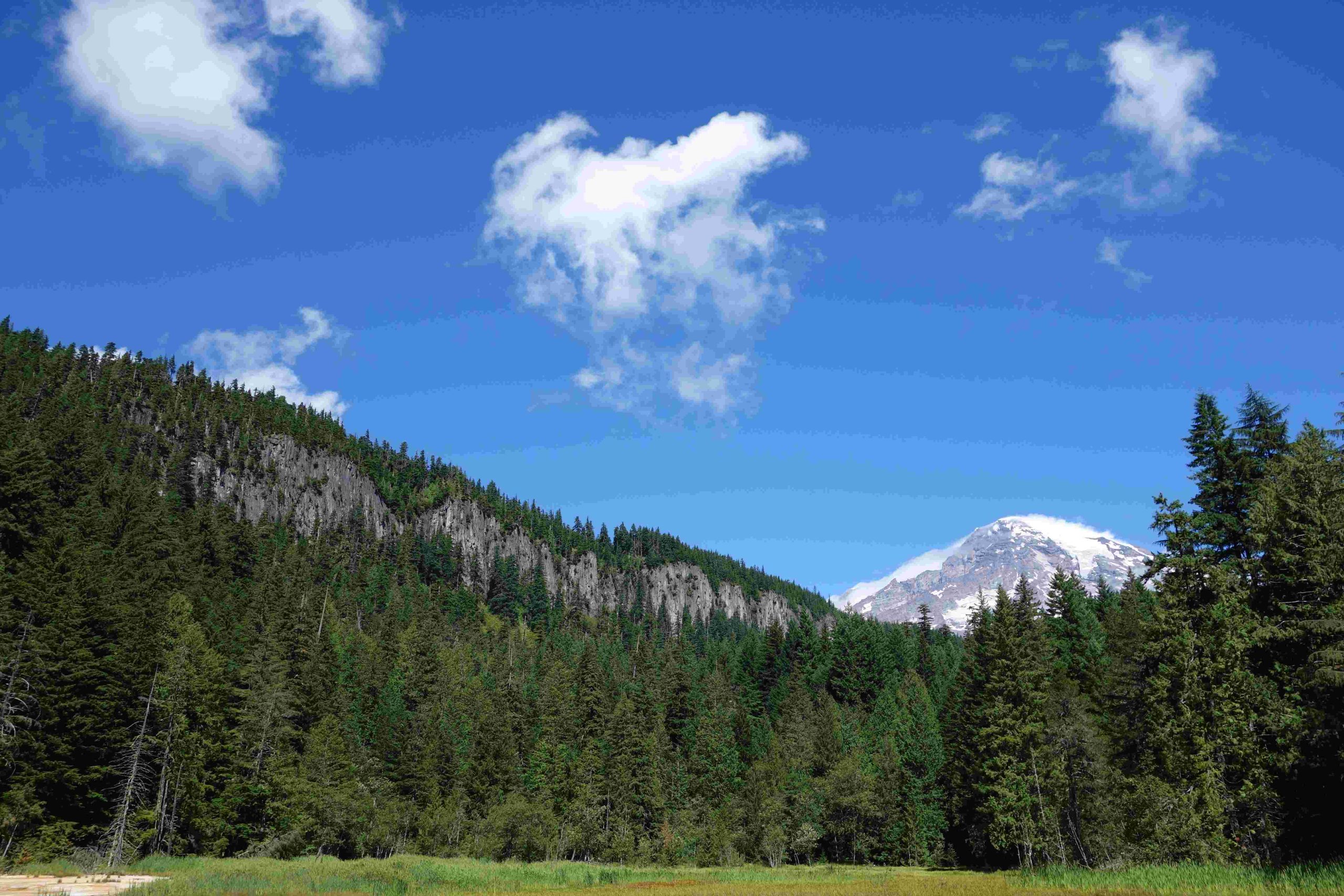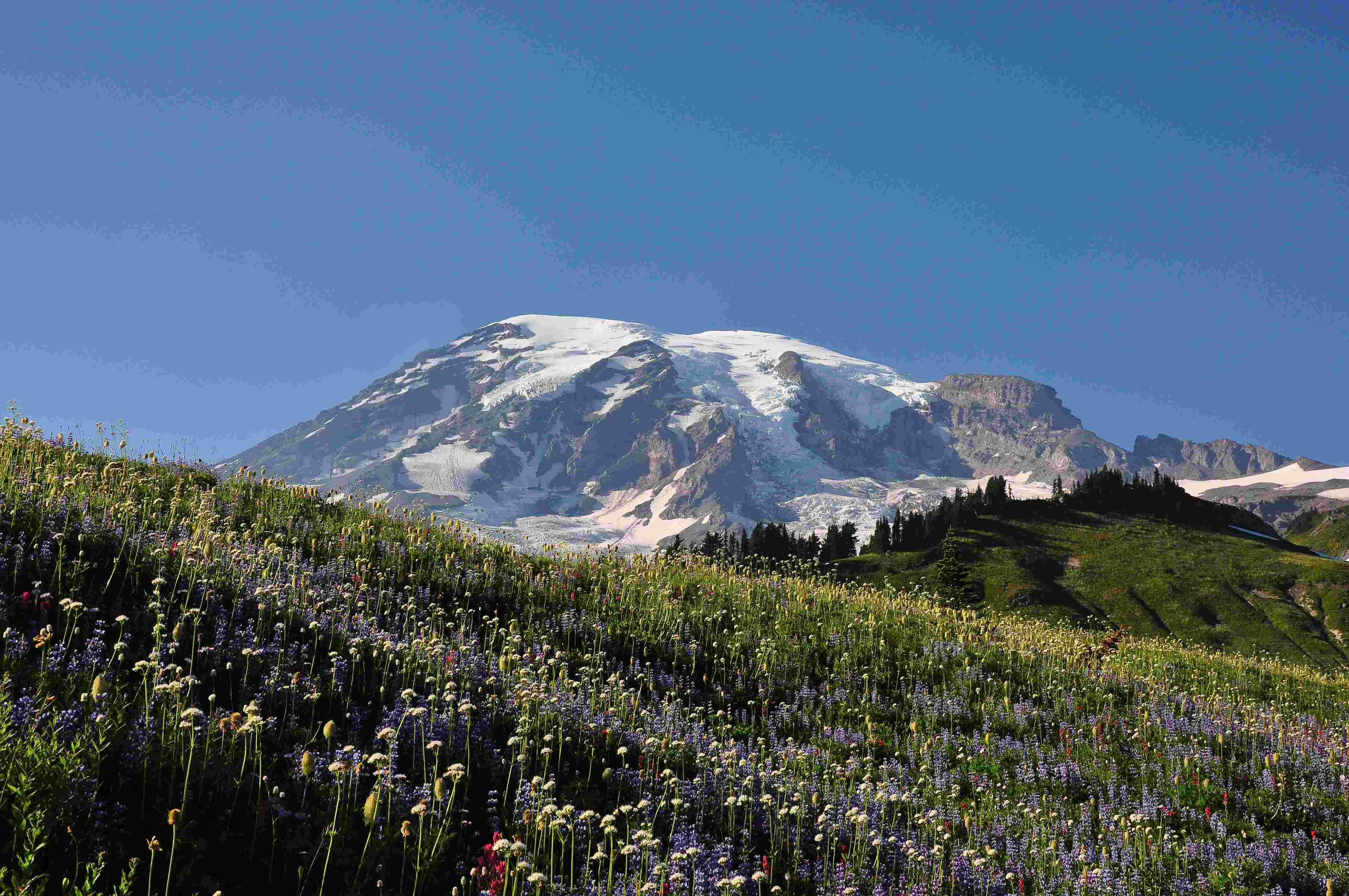The White River Trail at Mount Rainier is an 8.4-mile out-and-back trail that offers a perfect blend of natural beauty and moderate hiking challenge. Located in the Mount Baker-Snoqualmie National Forest, this trail follows the White River Valley for over five miles, providing hikers with stunning views of mature forests, cascading creeks, and glimpses of the majestic Mount Rainier. With an elevation gain of 700 feet and a high point of 3000 feet, the White River Trail is suitable for both beginners and experienced hikers, making it a popular destination for nature enthusiasts and trail runners alike.
What Makes White River Trail Mount Rainier Unique?

The White River Trail stands out for several reasons:
- Diverse Scenery: From towering old-growth forests to rushing creeks and river views
- Accessibility: Relatively easy trail with multiple access points
- Year-round Use: Snow-free from mid-April to November, with potential for winter hiking
- Wildlife Viewing: Opportunities to spot local fauna in their natural habitat
- Connection to Other Trails: Links to popular routes like Snoquera Falls Trail
Where Does the White River Trail Begin and End?

The White River Trail has several key waypoints:
- Starting Point: Camp Sheppard Trailhead (N47 02.153 W121 33.599)
- Midpoint: Ranger Creek Trail Junction (N47 01.430 W121 31.938)
- Endpoint: Trail’s Terminus on FR 7174 (N47 00.119 W121 31.150)
Along the way, hikers will encounter junctions with other trails, including:
- Snoquera Falls Trail
- Buck Creek Trail
- Ranger Creek Trail
How Difficult is the White River Trail?
The White River Trail is generally considered easy to moderate, making it suitable for a wide range of hikers. Here’s a breakdown of the trail’s difficulty:
| Aspect | Description |
|---|---|
| Elevation Gain | 700 feet |
| Distance | 8.4 miles (round trip) |
| Trail Conditions | Well-maintained, some short steep sections |
| Average Completion Time | 3-4 hours |
| Best Season | Mid-April to November (snow-free) |
While the trail is accessible to beginners, there are some challenges to be aware of:
- Short steep sections through big trees and side slopes
- Bridged crossings of Ranger Creek and Deep Creek
- Potential for snow in winter months
What Are the Parking Options for White River Trail?
Parking for the White River Trail is available at the Camp Sheppard Trailhead. Here’s what you need to know:
- Location: Follow SR 410 east from Enumclaw for 28 miles, then turn left onto the Camp Sheppard access road. The trailhead is 0.1 mile from the turn.
- Parking Pass: Northwest Forest Pass or Interagency Pass required
- Capacity: Not specified, but the trail is generally not very busy
- Seasonal Access: Parking area is accessible year-round, but SR 410 may close in winter
What Are the Best Scenic Viewpoints Along White River Trail?
The White River Trail offers several scenic highlights:
- Snoquera Falls Trail Junction: A popular side trip offering views of the falls
- Bridged Crossings: Picturesque views of Ranger Creek and Deep Creek
- White River Valley Overlook: A short side trail at 3.2 miles provides a panoramic view
- Forest Groves: Mature, towering trees create a serene atmosphere throughout the hike
How Can Hikers Prepare for the White River Trail?
To ensure a safe and enjoyable hike on the White River Trail, consider the following preparations:
- Gear:
- Sturdy hiking boots
- Weather-appropriate clothing (layers recommended)
- Plenty of water and snacks
- First aid kit
-
Map and compass (or GPS device)
-
Trail Etiquette:
- Stay on designated trails
- Practice Leave No Trace principles
-
Yield to uphill hikers
-
Safety:
- Check weather conditions before departing
- Inform someone of your hiking plans
-
Be aware of wildlife and keep a safe distance
-
Seasonal Considerations:
- Spring/Summer: Bring sun protection and insect repellent
- Fall: Be prepared for cooler temperatures and shorter daylight hours
- Winter: Check for snow conditions and bring appropriate gear (microspikes, snowshoes)
What Wildlife Might Be Encountered on the White River Trail?
The White River Trail offers opportunities for wildlife viewing. Hikers may encounter:
- Black-tailed deer
- Various bird species (woodpeckers, jays, warblers)
- Small mammals (squirrels, chipmunks)
- Occasional larger mammals (black bears, elk) – observe from a distance
Remember to maintain a safe distance from all wildlife and never feed animals.
How Does the White River Trail Connect to Other Hiking Routes?
The White River Trail serves as a gateway to other popular hiking destinations:
- Snoquera Falls Trail: Accessible via a junction, offering a scenic waterfall view
- Buck Creek Trail: Connects to SR 410, providing additional hiking options
- Ranger Creek Trail: Climbs steeply toward Dalles Ridge for more challenging hikes
These connections allow hikers to extend their adventure or create loop hikes for variety.
What Are the Best Times to Hike the White River Trail?
While the White River Trail is accessible year-round, certain seasons offer unique experiences:
- Spring (April-June): Wildflowers begin to bloom, creeks are full from snowmelt
- Summer (July-August): Warmest temperatures, longest daylight hours
- Fall (September-October): Autumn colors, cooler temperatures, fewer crowds
- Winter (November-March): Potential for snow hiking, quieter trail conditions
Each season presents its own beauty and challenges, so choose based on your preferences and experience level.
How Can Hikers Minimize Their Impact on the White River Trail?
Preserving the natural beauty of the White River Trail is crucial. Here are some ways hikers can minimize their impact:
- Stay on designated trails to prevent erosion
- Pack out all trash, including biodegradable items
- Use established campsites if backpacking
- Respect wildlife by observing from a distance
- Use biodegradable soap for washing, and do so away from water sources
- Follow fire regulations and use established fire rings when permitted
By following these guidelines, hikers can help ensure the trail remains pristine for future generations to enjoy.
The White River Trail at Mount Rainier offers a diverse and accessible hiking experience for outdoor enthusiasts of all levels. With its stunning scenery, moderate difficulty, and connections to other trails, it’s an ideal destination for those looking to explore the natural beauty of the Mount Rainier area. Whether you’re a beginner hiker or an experienced trail runner, the White River Trail provides an unforgettable journey through one of Washington’s most picturesque landscapes.
References:
1. https://visitrainier.com/white-river-trail/
2. https://www.wta.org/go-hiking/hikes/white-river-1
3. https://www.nps.gov/mora/planyourvisit/trails-of-mount-rainier.htm
